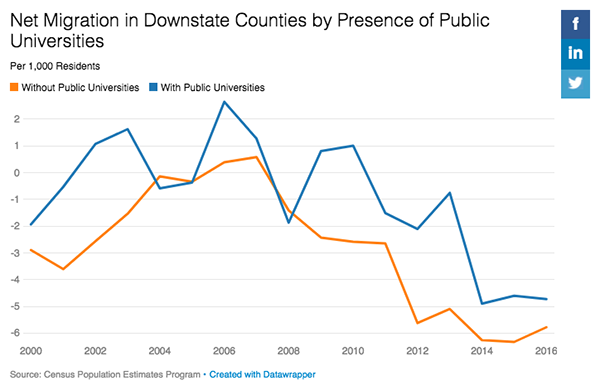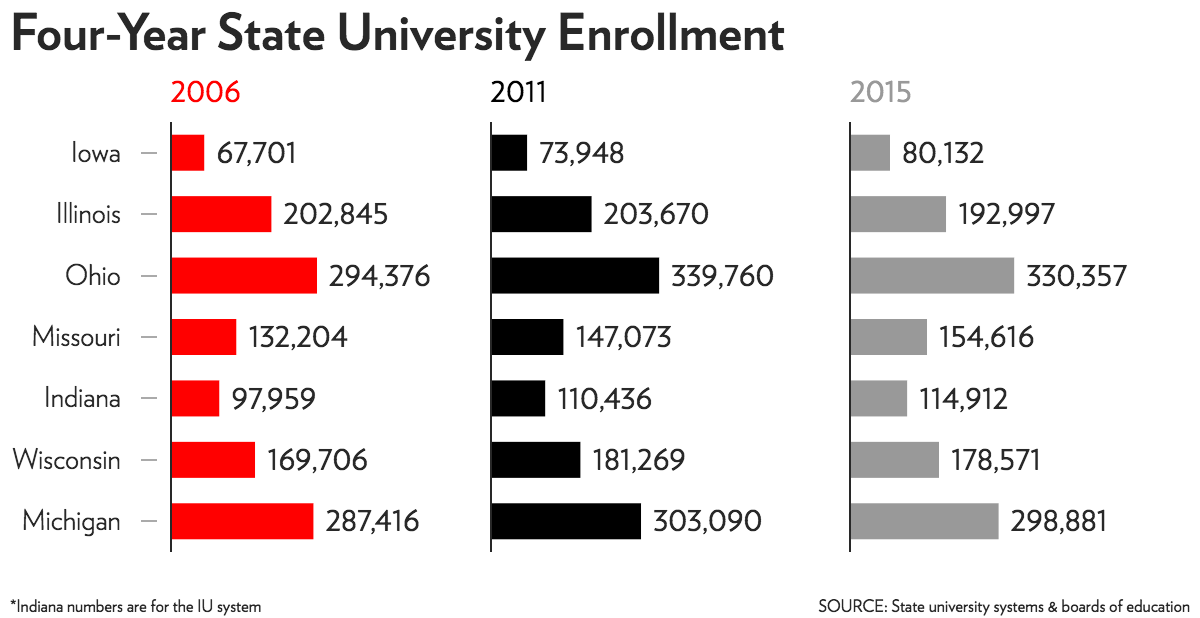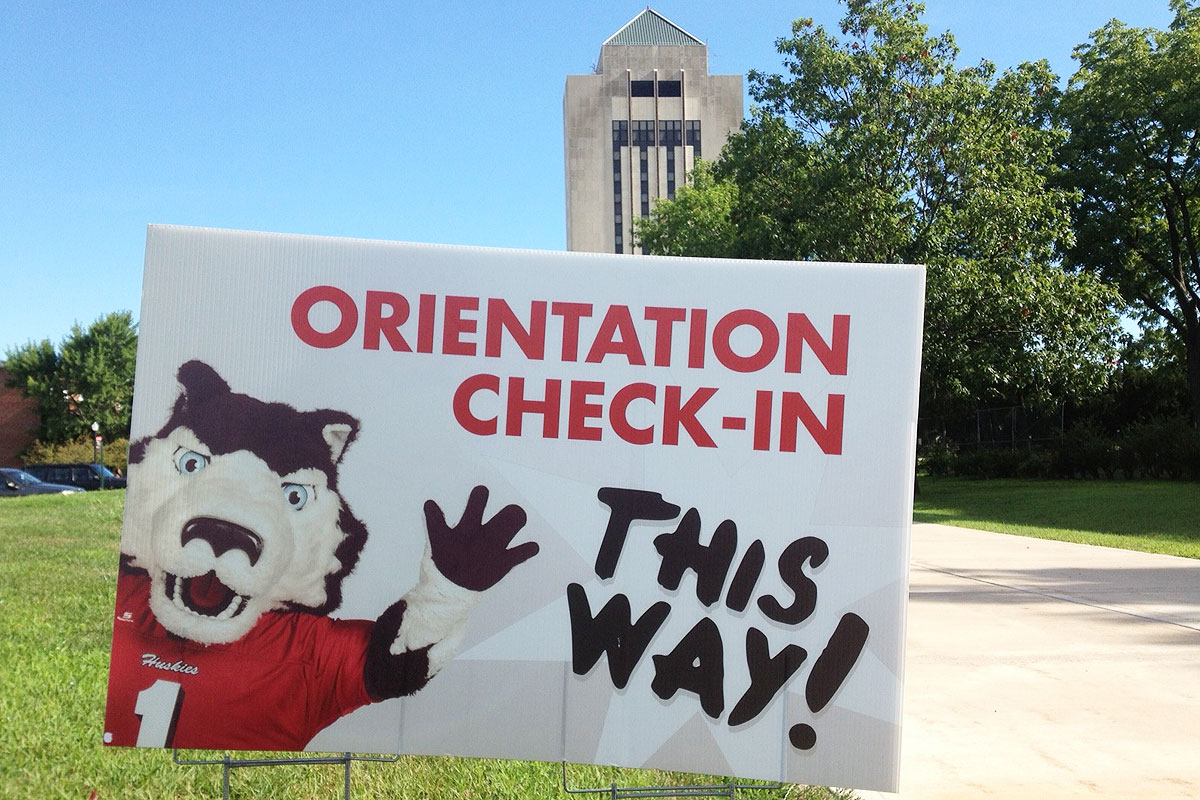The Center for Tax and Budget Accountability recently published a good piece on why Illinois is losing residents (and it's losing a lot). But "losing" suggests that people leaving Illinois is the problem.
And that's what the CTBA post clarifies. Compared to other states, Illinois is in the middle of the pack in terms of the number of people leaving, or out-migration. It's in-migration that's the problem, where Illinois is third from the bottom. While 27 people per thousand left in 2015, only 22 people per thousand moved in.
The problem's gotten worse throughout the state as well. Cook County has had net out-migration every year since 1990; downstate hovered around zero from 1990 to 2007; the collar counties had high in-migration until 2006. Beginning around 2006, net migration in all three areas regressed to near zero, as the Great Recession made it harder and less appealing to move at all, whether in or out.
Since the economy's recovered, all three areas, including the former growth region of the collar counties, have declined.
What's going on? CTBA goes through a number of causes, but one in particular caught my eye: migration trends downstate where there are public universities.

While typically these college-adjacent areas (the blue line in the graph) are more immune to population loss than those without nearby public universities (the orange line), both have fallen quite low in the last seven years.
Chicago has covered this trend before. In January, well into the budget crisis, Judith Crown covered the out-migration of Illinois high schoolers to neighboring states, finding that a problem which predated the crisis had gotten worse.
At the root of all this are cuts in state funding that have forced Illinois schools to raise base tuition and fees. At Urbana, in-state rates rose 59 percent over the past 10 years, to a minimum of $15,700 and a maximum of $20,700 (not including room and board), depending on the major. At the same time, financial aid through the state’s Monetary Award Program, which provides need-based grants to residents, doesn’t go as far as it used to. It’s not even clear from term to term whether funds will be available: In a survey released in December by the Illinois Student Assistance Commission, 47 percent of Illinois schools said they couldn’t guarantee that students would continue to receive in the spring semester awards they got in the fall.
Meanwhile, schools like the University of Iowa and the University of Missouri were making their schools just as or more affordable to attend for Illinois residents, wiping out the most obvious and easiest-to-control advantage one state has over another in terms of retaining its high-school graduates.
The results aren't particularly surprising, as I wrote not long after. State university enrollment has declined in Illinois while it's increased for our neighbors.

The problem seems to have gotten worse. The Illinois Economic Policy Institute recently released an overview of enrollment trends and the economic impact of the state's higher-ed contraction (h/t Capitol Fax), finding that Illinois colleges and universities lost 72,000 students during the budget impasse. That includes community-college students, a population much greater than the four-year student population, but it's still about a nine-percent decline; 4,900 direct jobs were lost, about a six percent cut.
Put together, it's a lot of students gone, and a lot of jobs lost that could also impact local populations. Smaller schools were the hardest hit. NEIU, Governor's State, and the two SIU campuses increased their tuition over nine percent from 2015-2017; UIUC, an internationally regarded, well-endowed flagship, raised its tuition just two percent. It also added about 2,500 students from 2011 to 2016.
This issue long predates the budget impasse. Back in 2008, the Institute of Government and Public Affairs at UIUC sounded the alarm: In the previous decade, state support of universities declined 18 percent, while tuition and fees at UIUC itself had increased from about 12 percent of the state median income to 16 percent. In 1988, MAP grants covered about 65 percent of public-university tuition; in 2008, about 40 percent.
The budget crisis simply accelerated this decline. To get out of it, the state can look to its neighbors—and why our high-school graduates are moving there.




Comments are closed.